Once in a while I’ll find volunteer carrots in the garden — tiny fern-like sprouts poking up from in between the mulch, or growing happily next to the numerous volunteer squash that seem to pop up all over the place after a new layer of compost has been laid.
These volunteer carrots come from seeds that have flown from nearby beds of flowering carrots. I usually have a few plants flowering at the end of the season, and not because they’ve been in the ground for two years.
While carrots are technically biennials, they often behave like annuals in warm climates. A seed sown in our mild winters, while temperatures are fluctuating between warm and cool, will be tricked into thinking it’s already gone through a winter at the end of its first year.
When spring rolls around just a couple months later, the plant will produce a tall, thin stalk with lacy, umbrella-like blooms reminiscent of Queen Anne’s lace (as the two hail from the same family, Umbelliferae, known for its distinctive flowers called umbels). Umbels (which are also seen on flowering parsnip, parsley, cilantro, dill, and fennel) are very attractive to pollinators, so you should always let a few of your Umbelliferae go to seed when they’re spent.
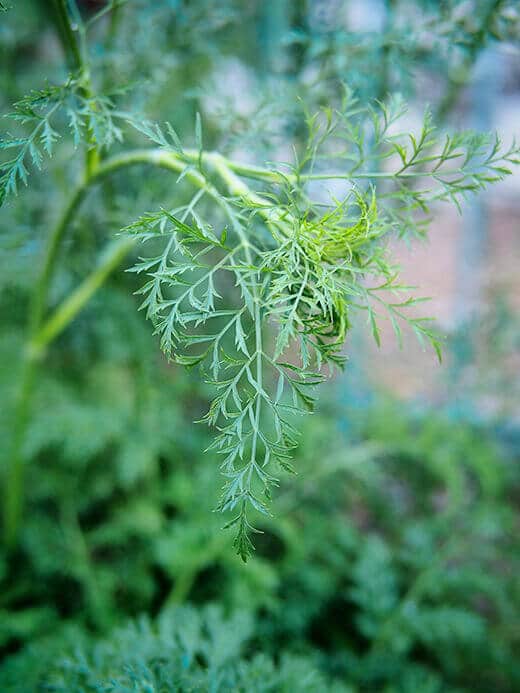
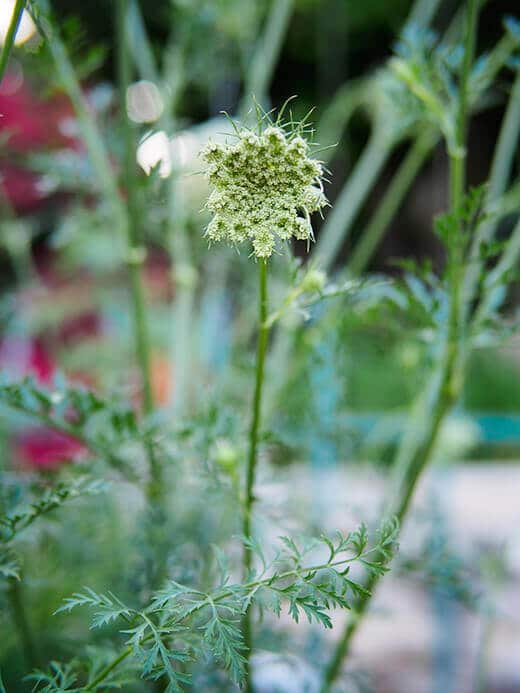
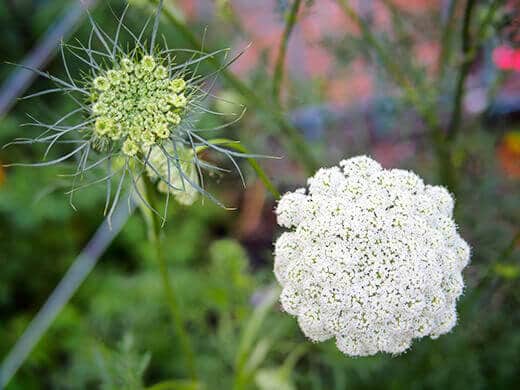
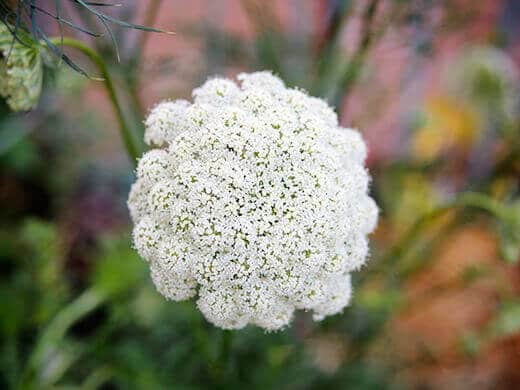
I pulled the tiny carrots alongside a “regular” carrot, which probably should’ve been harvested much sooner, as it rivals the colossal carrot I’d grown a couple of years ago!
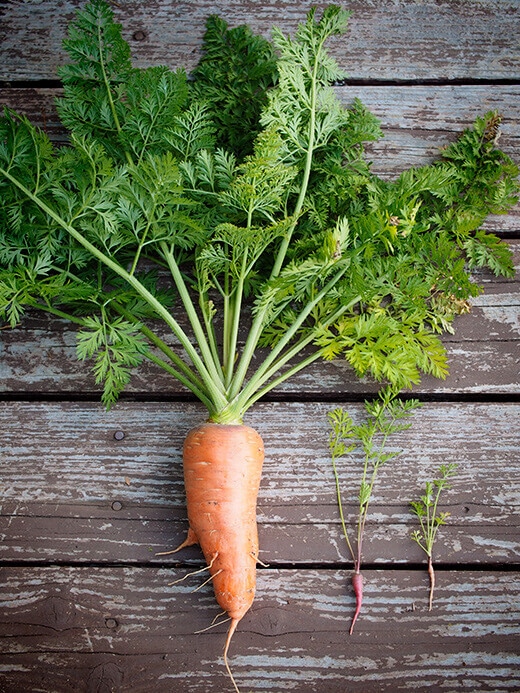
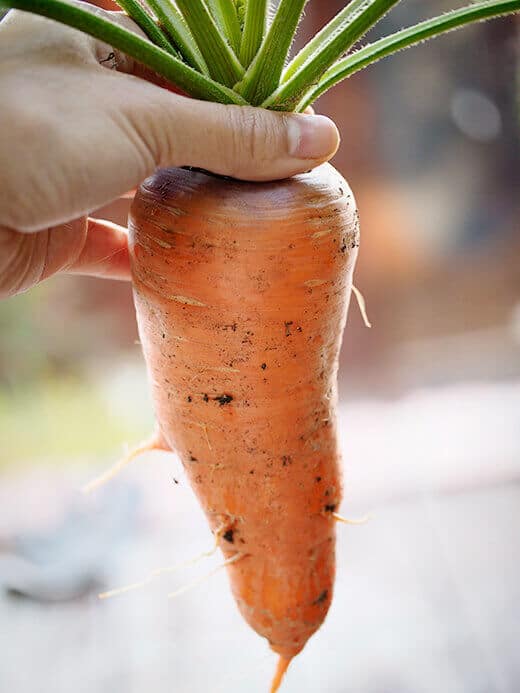
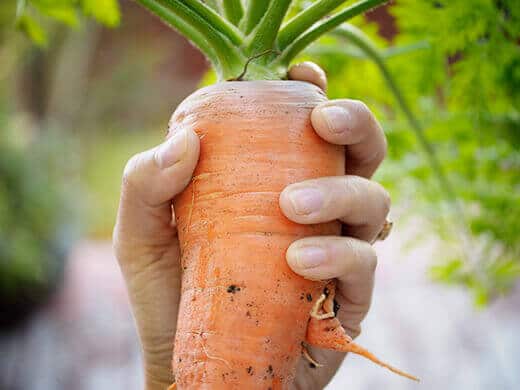
The beauty of volunteer carrots is the little surprise you find at the base of the stem… Will it be magenta, orange, white? They look like they belong on a plate in a dollhouse, but I love to use them as garnish on a salad plate. Like microgreens, only prettier. And they still pack all the powerful phytonutrients that microgreens are known for — despite their tiny size, microgreens have been found to contain four to six times more nutrients than their mature counterparts. Now that makes volunteer carrots seem much more special in the garden!

















Volunteer carrots look like tiny fern-like sprouts. This Little Carrot http://t.co/AqPfSTzWlQ #gardenchat < TY for RT! @Smart_Gardener
RT @theGardenBetty: Tiny carrot seedlings: like microgreens, only prettier. This Little Carrot… http://t.co/CHIZskmquz #gardenchat
RT @theGardenBetty: Tiny carrot seedlings: like microgreens, only prettier. This Little Carrot… http://t.co/CHIZskmquz #gardenchat
Tiny carrot seedlings: like microgreens, only prettier. This Little Carrot… http://t.co/CHIZskmquz #gardenchat
I have never seen carrot flowers before. They are lovely! I think I will leave one of mine to flower now just so I can see them in person. 🙂
You’ll get a few flowers per plant. I sometimes collect them for a vase. 🙂
Volunteer carrots 🙂 http://t.co/ZDWVuOt0zx from @theGardenBetty #gardenchat http://t.co/THYR5SwUDQ
RT @theGardenBetty: Volunteer carrots look like tiny fern-like sprouts poking up from between the mulch. This Little Carrot http://t.co/AqP…
Volunteer carrots look like tiny fern-like sprouts poking up from between the mulch. This Little Carrot http://t.co/AqPfSTzWlQ #gardenchat
RT @theGardenBetty: Tiny carrot seedlings seem like compostable volunteers, but they’re packed with nutrition. This Little Carrot http://t.…
Tiny carrot seedlings seem like compostable volunteers, but they’re packed with nutrition. This Little Carrot http://t.co/uvlCyq1x8Q #garden
That is one beautiful carrot!! I love the pictures of all the veggies you grow. I also love to use as much of each plant we grow as possible, can you eat carrot greens??
Yes, I wrote about that here: http://gardenbetty.com/2013/07/are-carrot-tops-toxic-the-short-answer-no/
This Little Carrot… http://t.co/KtDjU3X5Ry
The beauty of volunteer carrots is the surprise you find at the base of the stem. This Little Carrot… http://t.co/ZNG1thixSu #gardenchat
Tiny carrot volunteers pack a lot of phytonutrients on a plate. This Little Carrot… http://t.co/X1t5UCfYd5 #gardenchat #nutrition
Is it weird to call a carrot cute? Because that is one very cute carrot. 🙂
Not at all, I do it all the time. 🙂
Blogged on Garden Betty: This Little Carrot… http://t.co/OZpnpy1OXr